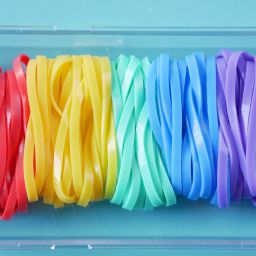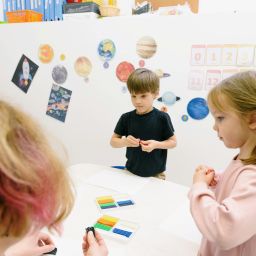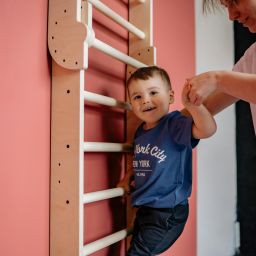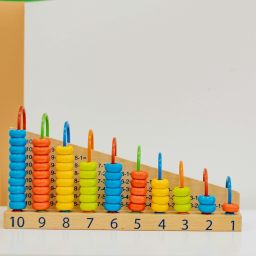
FH Summary: This post focuses on fostering flow states in children during play and learning, enhancing their cognitive, physical, social, and emotional development. It highlights the importance of hands-on, self-led play in achieving a flow state, leading to increased creativity, motivation and performance. The piece also outlines strategies for parents to create a conducive environment for their children to experience flow, emphasizing emotional and physical security, time allowance, identification of flow state, and adequate planning.
Greetings, parent, guardian, or simply anyone keen on inspiring the younger generation! At First Habits, we are committed to supporting you in laying elevated foundations for childhood development. As part of that mission, we’re focusing on a concept that’s often overlooked yet crucial for your child’s growth: achieving flow states. By understanding how to foster these states in our children, we can instigate an upward spiral in their development, paving the way for a lifetime of purposeful learning and play.
Understanding Flow: A Key to Holistic Child Development
A large part of a child’s development depends on the quality of their learning and play. We know that children are always learning even when they are just sitting and observing. Play and learning are very tightly tied together, meaning much of learning is actually a form of play and play is a form of learning especially in younger children. These dual, symbiotic activities form a solid foundation for a child’s cognitive, physical, social, and emotional well-being.
Children take part in numerous activities throughout the day but sometimes become bored or distracted and at that point they’ll usually look for something more interesting to do or assistance from an older sibling or adult. However, when a child is fully engrossed in a task, almost to the point that they are slightly removed from what is happening around them, we refer to this as a “flow state.”
A state of flow is what children (and adults for that matter) enter when they become so immersed in an activity that they seem to shut out the rest of the world to pursue it. This type of state is achieved through tasks that provide just the right level of mental (or physical) challenge to the child, which keeps them highly motivated and fully enthralled in what they are doing.
The Magic of Flow States: Enhancing Focus and Immersion
Adults often refer to this state as being “in the zone” – the subjective state in which a person functions at their highest capacity with their attention so invested in a task, that issues such as fatigue and boredom are no longer a concern. The experience itself is so enjoyable that people will participate for the sheer sake of doing it. Much of the research and science behind flow states was developed by Mihaly Csikszentmihalyi a Hungarian-American psychologist. He was the first to use the term “flow” for a highly focused mental state conducive to productivity and had this to say about flow in children, “Optimal experience is thus something that we make happen. For a child, it could be placing with trembling fingers the last block on a tower she has built, higher than any she has built so far; for a swimmer, it could be trying to beat his own record; for a violinist, mastering an intricate musical passage. For each person there are thousands of opportunities and challenges to expand ourselves.”
Think about the last time that you had that happen – maybe it was a work task or a sudoku puzzle or it could be as simple as just folding laundry after a long day. You feel like time is no longer and all your focus is put into the task at hand. Distractions don’t exist.
Hands-On Play: A Gateway to Flow and Skills Development
The easiest way to assist our children in achieving a state of flow is by allowing them to explore through hands-on play. Unlike play or instruction led by a teacher or adult, this type of play is self-led and allows children to cultivate essential skills like problem-solving, planning and focus – all of which form the basis of higher order thinking. The positive effects of being in a flow state while learning or playing include higher self-efficacy, better performance, more creativity, more motivation, and more perseverance when attempting new tasks. These skills can also assist your child in becoming more independent, self-confident, and self-reliant.
The skills learned during a state of flow form part of a child’s body memory and will not be forgotten – much like riding a bike. For young children, self-chosen activities that promote a state of flow may include playing with water at a water table or building a stack of blocks to a certain height; whereas for older children, activities like writing, drawing and imaginative play will achieve the same result. The important thing is that a child is free to explore on their own and are not bound by strict deadlines, distractions, or goals. As an added bonus if a child is able to incorporate not just their intellectual capability but also their body and senses, the likelihood of achieving a state of flow is even higher.
Supporting Your Child’s Flow: A Five-Step Approach
Now that we understand the benefits of achieving a state of flow, let’s look at ways that we can support our children in achieving it. Below are five ways in which you can help foster an environment that promotes a state of flow for your child:
- Help them identify a state of flow
When your child comes away from a task that they have been invested in, take time to discuss it with them. How did they feel while they were busy with the task? What did they enjoy about it? What kept them going? How did they feel once they had completed it? Discuss with them what a flow state is in simple terms. This will give them, as well as you, huge levels of insight into what piques their interest and what tasks inspire a state of flow as well as how to recognize when they are in a state of flow.
- Allow plenty of time
Although the pressures of modern-day life often result in us feeling that our days are too short to accomplish everything that needs doing, it is of vital importance to ensure that children are given enough time to explore so that they may organically enter into a state of flow. Putting time constraints on an activity may put undue pressure and prevent a state of flow from occurring altogether. Even worse, interrupting a flow state may disrupt important development.
- Children need to feel emotionally secure
Children are extremely sensitive to their emotions and the emotions of others. In order to enter a state of flow, they need to feel secure. They need to feel that it is safe for them to explore a particular activity and that the adult supervising them is also in a state of calm. As much as our children need to feel secure, we need to regulate our emotions so that they don’t pick up on any feelings of stress or anxiety which will hamper the flow process.
- Children need to feel physically secure
Create a designated space for your children to explore safely. Spend time monitoring your child’s needs and interest to ensure that this space provides resources and opportunities that engages them physically and mentally. The familiarity of a room or workspace that is repeatedly utilized will help to foster this feeling of safety and calm.
- Plan ahead
You’ve picked the space and it looks great. You’ve chosen the afternoon that you’ll give your children free reign to play and learn. You witness the magic moment that they become invested in a task… and then they get up to go and look for a snack. The moment is broken and it will most likely not come back in the near term. Part of preparing for a state of flow is sufficient planning. What snacks will your children need? Is there sufficient water for them? Will they need a towel or markers? While it is not possible to avoid all interruptions, there are those that can be avoided. Take time to review your chosen space and all the “obstacles” that you can overcome ahead of time.
Harnessing Intrinsic Motivation: The Secret Sauce of Flow
The most important part of the environment that you have fostered to promote a state of flow for your child is that the direction of each activity is child-led and focused on experience, rather than an external reward promised ahead of time. This is the difference between extrinsic and intrinsic motivation – a distinction that we are going to touch on again and again. Intrinsic motivation is the “secret sauce” of state of flow learning – when the child participates in an activity for the inherent satisfaction it brings, rather than a tangible consequence. Extrinsic motivation – which seems to become our default driver at times – is participating in an activity only in order to attain a desired outcome. Initially, you may need to guide your child and construct environments to promote a state of flow until they have firmly developed this skill for themselves. Ideally, your child will reach the point where they have developed this skill and are able to enter into a “flow state” multiple times throughout the day, throughout multiple activities. It will become a true First Habit that can happen once certain cues are present in their environment. That is why open communication with your child is imperative – you need to stay in touch with what sparks these states of flow.
In the quest for elevated foundations of childhood development, understanding and fostering flow states offers a powerful tool. By creating a secure, open environment that nurtures positive habits and intrinsic motivation, we can help our children immerse themselves more deeply in the joy and wonder of learning. It’s not just about equipping them for the future; it’s about enabling them to live and learn in a state of flow, right here, right now. For more about creating the optimal space for learning and development, see our post on growth mindset here.
Remember, cultivating these “First Habits” is a journey, not a destination. At First Habits, we’re here to guide and support you every step of the way. We invite you to explore our resources and join our community, ensuring you stay informed and inspired in your quest to help your child achieve their full potential.
















